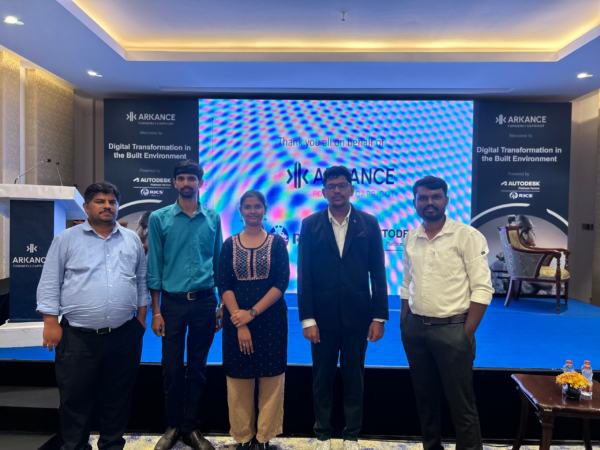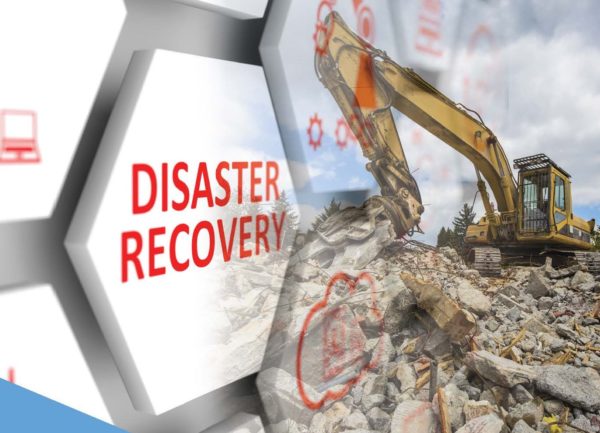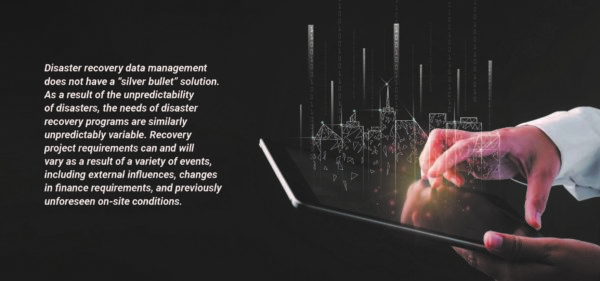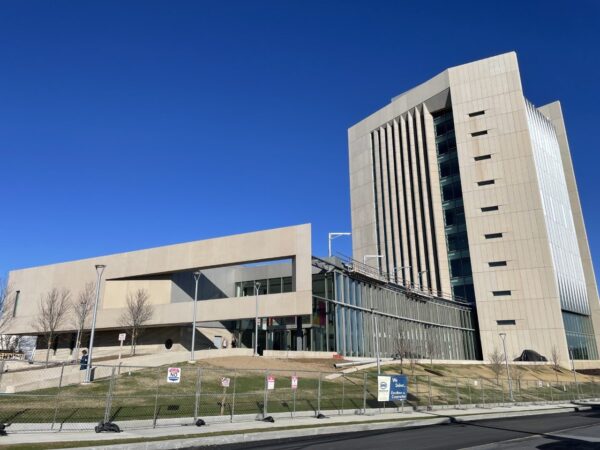
July 15, 2024 | Articles
Construction’s Digital Transformation & The Tools of Modern Project Management

Natural disasters are on the rise around the world. The first nine months of 2021 saw 18 individual “billion-dollar” disasters, according to figures from the U.S. government, where each event resulted in at least $1 billion in damages. These figures increase exponentially when considering similar weather-related, seismic, and man-made events around the world.
PMO and PMIS: The Right Team with the Right Tool
Each disaster is unique, but the disaster recovery process shares certain characteristics regardless of disaster type, location, or scale. Each of these characteristics presents its own recovery challenges for owners—compliance with funding requirements, managing stakeholder expectations, and data management, to name a few.
In addition, disasters have not only grown in frequency, they have also grown in severity, resulting in greater amounts of damage and increasing the size of recovery efforts. For the organizations launching these efforts, this necessitates approaching recovery as a portfolio of programs and establishing a Project Management Office (PMO) to guide progress at the outset and help ramp up results.
A PMO offers owners a set of principles and processes to guide and improve the management of their interrelated projects and programs in a cohesive and holistic manner. When implemented correctly, the PMO helps verify funded projects meet the needs of the organization by using standards, procedures, accountability, efficient allocation of resources, and management tools that support continuous improvement across the entire portfolio.
Through clear communication, a deep understand ing of the goals of the program, and clear and codified vision of the desired future state, the Hill PMO can then align human capital with processes and tools that increase the capability and success of PMIS implementation.
For disaster recovery projects, PMO expertise is particularly important as owners may not be familiar with the risks and challenges in managing complex projects, especially projects under increased public and media attention, and projects where funding sources and compliance metrics are often externally imposed. But, with the right team building and the right data management tools, owners can best position their recovery projects for ultimate success and achieve their goals, including:
To drive these results PMO teams turn to project management information systems (PMIS). The PMIS is critical to address challenges and maintain control over disparate projects and programs. Through clear communication, a deep understanding of the goals of the program, and clear and codified vision of the desired future state, the Hill PMO can then align human capital with processes and tools that increase the capability and success of PMIS implementation. Understandably, large-scale disaster recovery portfolios require robust, agile, and quickly scalable PMIS solutions to handle shifting streams of data and compliance requirements. Specifically, the PMIS will in large part dictate:
However, by their nature, traditional PMIS tools tend to be static, and require a resource and time commitment up-front to function to their full capability. These constraints can lessen the positive impact of the PMO on a recovery program as the wrong PMIS can result in missed milestones, increased costs, and lost opportunities to drive KPIs. What’s required is a Low-Code Application Platform (LCAP) that can augment or even replace the traditional PMIS tool and provide greater flexibility and capability.

Go Low: Equipping PMOs with Quick, Effective, and Adaptable Low-Code Solutions
Low code is a software development approach that, as the name implies, relies on less intensive coding than traditional PMIS tools. This allows end-users with no formal knowledge of coding or software development to customize applications and launch usable, reliable data management products quickly.
Like a traditional PMIS, low-code options still offer visual interfaces and customizable dashboards showing key project and program data and generate the same actionable intelligence as an Oracle-type PMIS, but out-of-the-box do not include the more code-intensive features of old-style PMIS tools.
Creating the “Just Right” Solution: How the PMO Drives Progress with an LCAP PMIS
With an LCAP PMIS solution in hand, the PMO can then drive progress across the disaster recovery portfolio. This includes:
Case Study: PMO for Post-Hurricane Housing
Following a major hurricane, a PMO for a U.S. territory was established to manage repairs to more than 8,500 homes. Project challenges included disparate geography, multiple subcontractors and vendors, and a compressed timeline.
Using a low-code PMIS solution, the PMO established a case management system that seamlessly integrated data from subcontractors every night, dynamically created formulas to calculate aging as status, automated alerts for case exceptions, and quickly configured and disseminated dashboards to drive the workload associated with the recovery. After implementing the low-code system, the PMO increased throughput and completed the project in less than five months. The implementation enabled metric tracking with optimized speed, quality, and cost, and ultimately supported full reimbursement for the project under FEMA’s Public Assistance program.
Conclusions
There is no “silver bullet” solution to disaster recovery data management. Disasters are largely unpredictable, and the needs of disaster recovery programs, therefore, are also unpredictable. The needs of recovery projects can and will shift due to a variety of factors—from external pressures to changes in funding requirements to previously unknown conditions on-site. This results in the key challenge of how to achieve momentum and scale across the program effectively.
However, an experienced, knowledgeable PMO team equipped with a the right PMIS solution can turn this unpredictability into an advantage for owners by offering a scalable, customizable, lower-cost tool designed to drive progress and scale up work quickly.
Combined with the know-how and understanding of an experienced PMO to help build, implement, and train end-users, a low-code system can help owners manage their recovery programs with greater cost and schedule certainty, increased control, and lower system costs overall.

Hill International, Inc. Vice President, Resiliency and Disaster Recovery Andy Robinson, PMP, has more than 30 years of experience in strategic consulting, program management, and solutions development. Andy specializes in leading resiliency and disaster recovery assignments and served in leadership roles for the Road Home Program following Hurricane Katrina, the New Jersey Housing Program following Superstorm Sandy, and the U.S. Virgin Islands STEP program following Hurricanes Irma and Maria.

Share

July 15, 2024 | Articles
Construction’s Digital Transformation & The Tools of Modern Project Management

July 10, 2024 | Articles
GC/CM at Post Falls: Managing Avista’s North Channel Dam Rehabilitation Project

June 23, 2024 | Articles
Irv Richter – An Innovator, A Pioneer, A Leader (1944 – 2024)

June 14, 2024 | Articles
Environment of Care Standards – Meeting the Challenge (Part Two)

June 13, 2024 | Articles
PMO for Public Transit Project Success: The Reopening of Philadelphia’s Franklin Square Station

June 7, 2024 | Articles

May 17, 2024 | Articles
Hill Interim Federal Market Sector Leader Jane Penny Receives Golden Eagle Award

April 11, 2024 | Articles
A Model Move: Managing Move-In at the Sylvia H. Rambo U.S. Courthouse